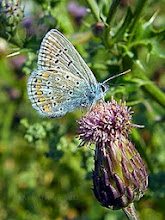The term Concept Photography best describes the creation of 'artistic' images created through the photographic process, where the photographer combines or introduces new pictorial elements into a photograph to form a cohesive or believable composition.
Unlike Digital Art where the imagery is painted in from scratch pixel by pixel or Collage, in Concept Photography the final photographic image takes into account all the aspects of the light within the main photograph, in such a manner as to convince the audience that the image may naturally exist as a single record of the scene.
Concept Photography is not a new form concurrent with the age of digital photography. It has been in existence ever since post processing and darkroom skills have been utilised to manipulate photographs to convince or fool the audience, on the preconception that the camera never lies. Many examples exist, like Elsie Wright and Frances Griffiths photographs of the Cottingley Fairies (which I hasten to add are not that convincing when you consider how light casts the shadow), the secretly edited images utilised for propaganda purpose by various governments and media organisations over the years, to the vast array of manipulated imagery used in advertising and or present on the Internet.
In many ways Concept Photography perhaps truly defines a photographer's worth by way of its challenge. For to succeed in this Art, the photographer proves that they fully understand all the complexities that light provides within the physical sphere in relation to the intensities of, radiation, temperature, hue, absorption, fraction and reflection; as well as the complexities born through the lens, aperture and sensor in relation to the intensities of, exposure, distortion and refraction provided by and within the equipment they are using.
Converting or manipulating photographs to change the visual aspects of an image at this level can provide a lot of fun and satisfaction. Simple exercises in Concept Photography will improve your general editing skills, and assist in the disciplines of mastering the finer elements of post processing; underlining the importance and need in adjusting the adjacent areas in an image after localised hard editing.
For example: Just as removing a lamp post from a scene requires its shadow to be removed; Boosting the Saturation or intensity in the colour of a specific item (improving the compositional aspect to draw and hold the viewer's attention), may well require additional tonal changes to be made in the surrounding areas relevant to the situation within the image as a whole. After all, it is the attention to the finer details that adds that sense of impact and extra quality to a shot, defining its worth, and elevating it above the vast sea of point and shoot snap shots.
Shy Satsuma
Of course any measure in success or merit able worth, is subjective to the personal preferences of the audience's perception and expectation, and indeed, as with many aspects in life subject to the fashions and opinions imposed by society.
Byway of a footnote upon the preconception that the camera never lies, there is of course the one possible exception; in the photographs taken with Polaroid like cameras, where the sensory capture and subsequent development of the photograph, are effectively accomplished within the sealed envelope of film held at the correct temperature.
I think I will stay with digital photography




No comments:
Post a Comment